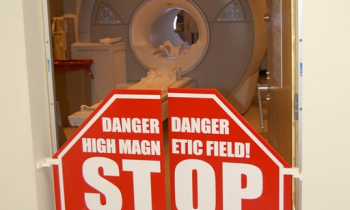Artificial hibernation and aortic surgery
2,871 aortic surgery procedures were carried out in Germany last year. 317 of these were on the aortic arch - and particularly dangerous.
The blood supply to the brain has to be limited for a considerable time or even completely stopped. Under normal circumstances, this would be fatal for the patient - if it wasn’t for a very special procedure: hypothermic circulatory arrest puts patients into artificial hibernation during the entire procedure.
Pencil-thick cannulas are inserted into groin vessels, then blood is circulated via tubes to a heart-lung machine and the body temperature is lowered to 18ºC. Simultaneously, the heart-lung-machine pumping rate is reduced until circulation is stopped completely and the blood volume is drained into a reservoir. The surgeon thus replaces the aorta or aortic arch in a blood-free site
The time-scale for artificial hibernation is limited, the decisive factor being oxygen reduction and metabolic activity through temperature reduction. At a body temperature of 18ºC, up to 40-45 minutes worth of cerebral ischemia is usually tolerated without problems. With modern heart-lung-machines and hypothermic equipment, temperature lowering and raising can be controlled precisely. There is some controversy over the different methods of control of the acid-base balance during various temperature phases.
At the 32nd International Conference of the German Society for Cardiovascular Engineering e.V. in May, about 300 international specialists discussed strategies for improvements to this sophisticated method of cardiovascular support. Source: German Society for Cardiovascular Engineering e.V.
01.07.2003











